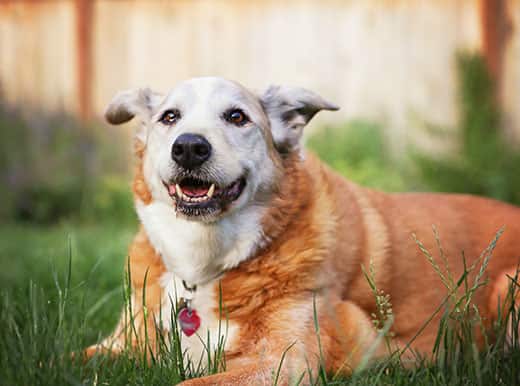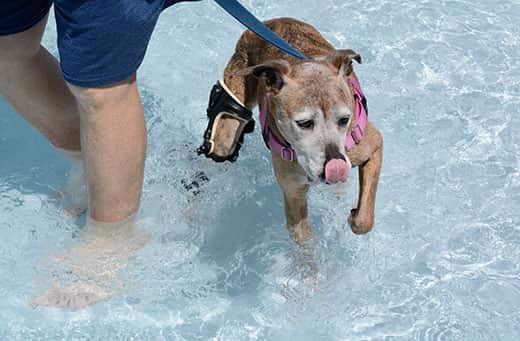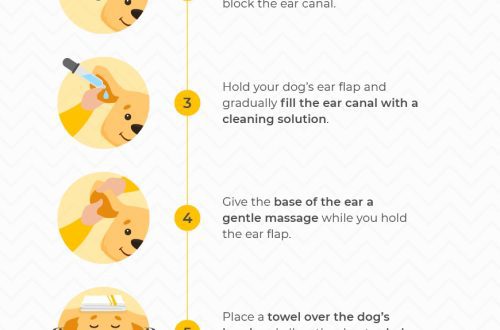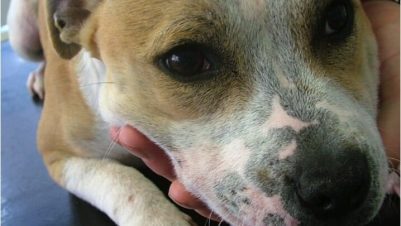
8 Maladi komen nan pi gran chen
Regardless of the age of the pets, all owners want to think that they will be with them forever. Therefore, it is important to monitor their health in old age in order to improve their quality of life as much as possible. What are the most common problems of older dogs and how to help an elderly pet?
contents
A ki laj yon chen konsidere kòm granmoun aje?
 On average, dogs reach old age when they are seven years old, but in practice it depends on size and breed, according to the American Veterinary Medical Association (AVMA). Very large breeds age faster than small breeds. If the Great Dane is considered mature at six years old, then the tiny Chihuahua may not reach the status of an aging dog until eight or even nine years old.
On average, dogs reach old age when they are seven years old, but in practice it depends on size and breed, according to the American Veterinary Medical Association (AVMA). Very large breeds age faster than small breeds. If the Great Dane is considered mature at six years old, then the tiny Chihuahua may not reach the status of an aging dog until eight or even nine years old.
Other factors such as genetics and environmental conditions can also influence the aging process of a particular animal. Once a dog starts showing signs of age-related health problems, it can be considered senior regardless of age.
There are quite a few diseases of old dogs, but there are only eight most common:
1. Loss of hearing and vision
Degeneration of tissues in the eyes and ears can cause varying degrees of deafness and blindness in older dogs, writes The Spruce. Older pets are also prone to developing cataracts, which the Pet Health Network defines as clouding of the lens of the eye that can lead to partial or complete blindness. Cataracts can be surgically removed, but in most cases dogs have no problem moving around after losing their sight, using their sense of smell to explore their environment and navigate. As the dog ages, the hearing problem usually becomes permanent. Regular cleaning and care of your pet’s ears can help slow the progression of deafness with age.
2. Joint problems
According to The Spruce, the most common cause of joint pain and stiffness is osteoarthritis. This progressive degenerative disease leads to loss of lubrication and abrasion of cartilage in the shoulders, hips and joints of the extremities. Although there is no cure for this disease, a number of methods help reduce pain and slow progression.
Nutrition plays an important role in reducing joint problems in dogs. It is important to make sure your pet is eating healthy, nutritious food. If joint problems progress, ask your veterinarian about a prescription diet to promote joint health.
3. Demans
Dogs, like humans, experience cognitive decline with age. This leads to the development of symptoms similar to those of Alzheimer’s disease in humans, writes The Spruce. Confusion and disorientation, howling or barking for no apparent reason, feeling lost in familiar surroundings, and puddles on the carpet can all be signs of dementia in older dogs.
However, these symptoms may indicate other conditions as well. It is important to discuss the first signs of dementia with your veterinarian. Like arthritis, there is no cure for dementia, but some medications can often help dogs with the condition. Products like Hill’s Science Plan Senior Vitality dog food improve brain function with powerful antioxidants.
4. Kansè
Older dogs are prone to lumps and bumps, but fortunately not all of these are cancerous. However, an older dog’s cancer risk increases with age, so it’s best to check for any suspicious growths, says AVMA. Regular check-ups and cancer screenings can help detect tumors that are difficult to see or feel.
5. Pwoblèm kè
As dogs age, heart disease can also develop. One of the most common forms is congestive heart failure, which develops when the heart can no longer pump blood efficiently. In this case, fluid accumulates in the heart, lungs and chest cavity, according to the Cummings Veterinary Medical Center at Tufts University. Coughing, difficulty breathing, exercise intolerance, loss of consciousness, and vomiting for an unknown reason are all signs of possible heart disease. With such symptoms, the dog should be taken to the veterinarian as soon as possible.

6. Obezite
A dog’s weight can have a significant impact on its health, especially as it ages and activity levels decrease. Overweight older pets are more prone to diseases such as diabetes.
According to the American Kennel Club, obesity can make it harder to treat heart disease, joint problems, and some types of cancer. It is important to provide your senior dog with the amount of exercise he can safely handle. In addition, it is necessary to feed her with age-appropriate food so that she receives balanced nutrients and the correct amount of daily calories.
7. Problems with the gastrointestinal tract and urinary incontinence
An older dog may also experience a number of gastrointestinal problems. Although such problems are not always serious, they can indicate other pathologies, such as kidney disease, so if vomiting or diarrhea persists, it is best to consult a veterinarian.
In older dogs, the muscles that control the bladder weaken. This leads to urinary incidents in the home, but urinary incontinence can also be a sign of a more serious problem, such as a urinary tract infection. Urinating at home can also be a sign of dementia. If problems with the gastrointestinal tract and urinary incontinence persist, it is best to discuss them with a veterinarian.
8. Kidney problems
As dogs age, kidney function tends to deteriorate. Chronic kidney failure is incurable, notes The Spruce, but it can be managed with proper treatment. It will extend the dog’s life and improve its quality.
Kidney problems can also be caused by certain medications used to treat other conditions common in older dogs, warns Wag!. It is important to take your pet to the veterinarian for check-ups every six months. Regular blood tests will detect kidney disease in the early stages.
Nutrition plays an extremely important role in maintaining the health of your dog’s kidneys. Therefore, it is necessary to consult a doctor and determine which food is suitable for the condition of the pet.
Growing old is no easier for a dog than for a human. The best thing you can do is take your beloved friend to the veterinary clinic every six months for a check-up for these common health problems.
Keeping a close eye on your pet at home and informing your veterinarian of any unusual signs will help in early detection of these diseases and improve your dog’s chances of a long and healthy life.
Gade tou:
- Poukisa ou ta dwe adopte yon chen ki pi gran?
- Pran swen yon chen granmoun aje: kenbe vitalite
- Kisa pou nouri yon chen ki pi gran?
- 3 lide pou al pran plezi aktif ak yon chen ki pi gran





